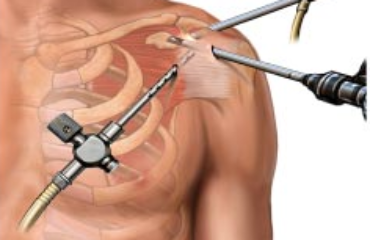Anytime injury occurs in the knee, it poses a problem. It is painful and oftentimes prevents a person from walking properly. The kneecap, or patella, is one of the areas that can be affected by injury. The patella is one of three bones that come together at the knee joint. Cartilage covers these bones where they come in contact. A tendon envelopes the patella and it connects the thigh muscle to the shin bone. The normal kneecap slips up and down a groove on the end of the thighbone. However, an injury is apparent if the groove is uneven or too shallow to hold the patella. An injury that is caused by falling too hard on the kneecap, for instance, can dislocate it as well.
Patellar instability may or may not cause problems for a patient, but more commonly, it will cause discomfort with activity. Pain around the side of the kneecap will be apparent as well. If a person is experiencing kneecap discomfort, an orthopedic physician should be consulted.
Factors
There are an array of factors that can lead to patellar instability. It could be that a number of factors could contribute to the instability of the knee cap. A wider pelvis could put strain on the knees; a shallow groove could also pose problems as well as abnormalities in gait. There are many  presenting symptoms that a person suffering with patellar instability will experience:
presenting symptoms that a person suffering with patellar instability will experience:
– Knee buckles; may not support weight
– Feel knee slipping
– Knee stiffness
– Swelling around knee
– Knee catches during movement
– Creaking or cracking sounds while knee is in use
– Pain in knee when sitting or bending leg
Diagnosis
The doctor will assess the knee when the patient walks around the exam room. The patient will be asked to straighten and bend the knee. Measurements will be done to check knee alignment or if the thigh muscles are weak. X-rays may be ordered to see how the kneecap fits within its groove.
Treatment Options
• Physical Therapy
• Bracing and Taping
• Better Footwear
Sometimes the kneecap may be completely dislocated. If that is the case, the kneecap will need to be slipped back into its proper place. The physician will do what is called a reduction; gentle force is applied to push the kneecap back in place. Reduction may happen on its own at times.
If a dislocation damages other areas of the knee, this could lead to arthritis. Surgical intervention, done arthroscopically, can correct this issue. The procedure will mean less recovery time since it does not entail large incisions in and around the knee.
If the knee problem tends to be chronic, where it keeps coming back, then surgery will be needed. Surgery can realign and tighten tendons to stabilize the kneecap or to release any tissue that keeps pulling the kneecap out of alignment.
The earlier knee problems are addressed, the better the outcome for the patient. In other words, it may mean preventing any further damage to the knee itself and avoiding any surgery altogether.



